CHAIN LUBRICANTS
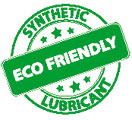
Explore our extensive range of chain lubricating oils, all derived from renewable sources and petroleum-free. Choose the perfect fit for your bike and riding conditions, ensuring optimal performance and weather resistance.
SLICK
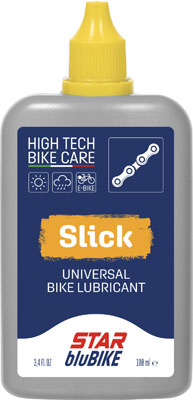
Cod. 30000 – 100 Ml
Cod. 30001 – 500 Ml
UNIVERSAL BIKE LUBRICANT
SLICK is a universal lubricant with a medium viscosity containing special additives that protect against wear and rust, indicated for all bike parts.
WET
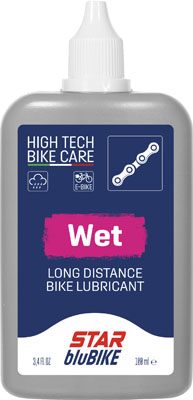
Cod. 30002 – 100 Ml
Cod. 30003 – 500 Ml
LONG DISTANCE BIKE LUBRICANT
WET is a high viscosity synthetic lubricant with a low friction coefficient. The special additives provide excellent adherence to metal parts and reduce rusting and wear.
X-DRY
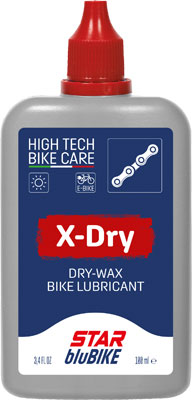
Cod. 30004 – 100 Ml
Cod. 30005 – 500 Ml
DRY WAX BIKE LUBRICANT
X-DRY is a professional bike lubricant formulated with special additives thatreduces wear. This lubricant leaves resistant and stable film composed of paraffin, and additives with a very low friction coefficient.
CERAMIC
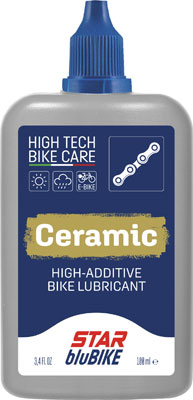
Cod. 30006 – 100 Ml
Cod. 30007 – 500 Ml
HIGH ADDITIVE BIKE LUBRICANT
CERAMIC is a new generation of synthetic oil enhanced with CERAMIC particles that assurethe maximum in long lasting lubrication even in extreme conditions. High dirt repellent.
BIO LUBE
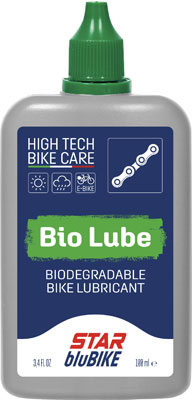
Cod. 20.008 – 100 Ml
Cod. 20.009 – 500 Ml
BIODEGRADABLE BIKE LUBRICANT
BIO LUBE is a natural lubricant, over 95% biodegradable, studied specifically to lubricate and protect chains and any other part of your bicycle.
Lubricating the bike chain is an absolute must for every and any cyclist, no matter if you are an amateur or a racer .
Chain lubrication is important for a matter of smoothness, friction and corrosion protection.
The bike chain is made up of external links, which are connected to each other by cylinders, with pins inserted (the hole in the link is slightly smaller than that of the pin). When the chain moves, forces are created , which make the various parts work in contact with each other.
Lubrication makes the sliding between the links and the pins smooth, reduces friction and the heat generated which could ruin the surface of the parts. Lubrication also protects the metal of the chain from water and oxygen present in the atmosphere to avoid corrosion and makes the chain movement more silent.
From this we understand that lubrication must take place on the pins and only on those, trying to let the lubricant penetrate inside them.
Take attention that the external links of the chain must NOT be lubricated as these would attract dust and dirt, which could accumulate on the front derailleur, on the sprockets and on the chainrings, ruining them. Lubrication must be done only on a clean chain, as it is unthinkable to add lubricant to a chain incrusted with old oil and dirt .
What lubricant should we use?
The lubrication of a bicycle chain must be done using only products designed for bikes, preferably biodegradable. STAR bluBike “drop” oils are all produced from re-newable sources, do not contain petroleum, and are readily biodegradable.
Absolutely to avoid unblocking products designed to dissolve rust. These are not very viscous , and do not stay in the pins and dirty the chain. The aerosol lubricants without an applicator tend to end up everywhere as well as on the chain and could be not only useless but harmful.
Bicycle lubricants usually fall into two broad categories. Wet or Dry is the description of the characteristics of the lubricant and not necessarily the conditions of use. You can use a wet lube on a sunny day and a dry lube when it rains. The choice is to be made according to your needs: duration, need for lubrication, cleaning. Based on this analysis, one can decide which lubricant to use.
Dry fluid lubricants, often Teflon-based, have a high lubricating power. They leave a really thin film of oil and wax, do not dirty and do not cause dust and mud to stick to the chain. On the other hand, suffer greatly from water, which washes them out and due to the small amount of product remaining on the chain are lasting less if compared with a “pure” oil base lube. You would need to lube your bike chain more often.
Wet Lubes are viscous lubricants which provide considerable lubrication. They have excellent resistance to water and washout and tend to last a long time after application. On the other hand, they are heavy, therefore dirt and dust will be attracted. More attention and time during the cleaning process will be required.
STAR BLUBIKE can provide you all that is necessary for Cleaning / Lubricating your Bike Chain, which will take only a few minutes.
Step 1: Clean the chain
You cannot lubricate a dirty chain. To avoid damage , use only products specifically developed for bikes. STAR BLUBIKE Chain Cleaner, Bio Chain Cleaner or Chain Cleaner Spray are able to remove easily all the dirt in a safe way. Spray Chain Cleaner on your chain, and clean with a cloth/brush. You can also use Chain Cleaner ( regular or bio) in the Chain Machine which will guarantee a shiney chain results. In case of a really dirty chain, you can remove and soak it in a small bucket with the cleaner.
Wipe the chain with a rag and spin the pedals to remove any remaining dirt. Change the part of the used rag often , so as not to return soil to where it was cleaned.
Step 2: Give the lubricant
Lubricating the chain is a meticulous operation: in fact, oil must be applied to each pin of the chain! Use the removable pins as reference so you know when you have lubed all of them.
The important thing is that the lubricant penetrates inside the external cylinders and grease the pins;
If you are using STAR BIKE LUBE put the applicator near to the pins.
X-Dry lube is really liquid, do not worry if it is dripping off the chain, once the solvent has evaporated, it will leave a thin film of wax/lube.
Wet is really viscous, so give it time to penetrate well.
Premium Lube Ceramic, contains micro particels that reduce enormousely the friction.
Slick is an Universal lube, less viscous than Wet but longer lasting than X-dry.
Bio Lube is a quite fluid lubricant obtained from vegetable base oil!
Step 3: Absorb Exceeding Product
To remove excess lubricant, which can cause dirt and dust to stick, grab the outer links of the chain with the rag and spin the pedals.
Step 4: Climb the ratios
Make the chain go up from the small sprocket to the large one and then downshift the ratios until you are back on the small sprocket. In this way you are “moving” the pins, allowing the lubricant to settle on the entire surface to be lubricated.
We have seen how to properly lubricate the chain, which products to use, and which to avoid. Chain lubrication is a trivial operation but offers very great advantages: greater smoothness, less noise, longer chain life, longer life of chainrings, sprockets and derailleurs.
In short, there is no excuse for not doing it!

